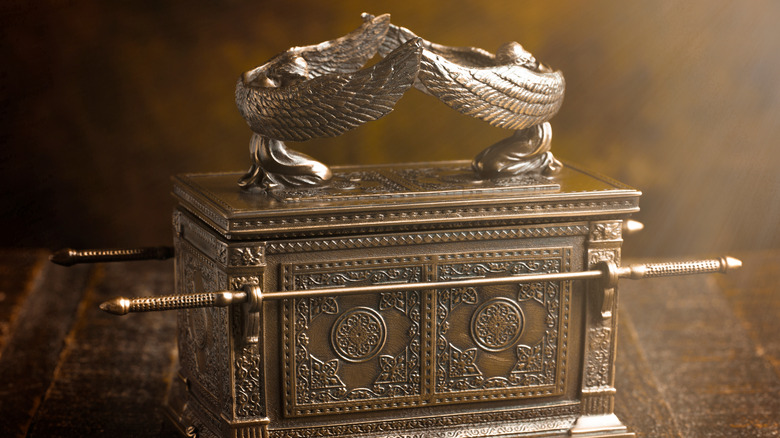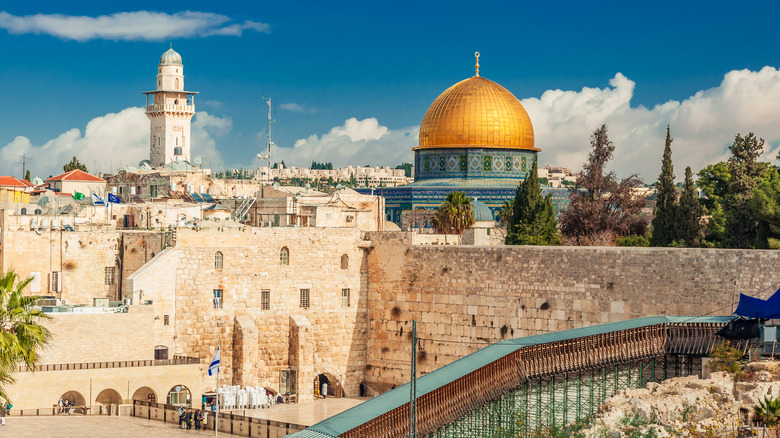The Real Reason We Can't Find The Ark Of The Covenant
Many religions have relics that are important to them, but perhaps no religious relic has been the subject of as much myth, speculation, and popular culture impact as the Ark of the Covenant. As described in Exodus 25, the Ark was to be a symbol of God's intervention in the lives of the Hebrew people, and it was to contain the stone tablets upon which the Ten Commandments were etched, as well as a jar of manna, the food God miraculously provided to his people while they wandered in the desert. After its first mention, the Ark then bounces around the Old Testament narrative here and there, according to Christian question-and-answer website Got Questions, before completely disappearing from the narrative after 2 Chronicles 35.
What happened to the Ark after the Biblical narrative is now left to speculation based on an incomplete historical record, or is a matter of taking an obscure Christian sect's word for it. The Ark could be in a church in Ethiopia, it could be buried under the streets of modern-day Jerusalem, it could be somewhere else in the world, long since forgotten about, or it could have been completely destroyed, if it even actually existed in the first place.
If the Ark exists, getting to it could be problematic
If the Ark of the Covenant still exists, there are two places where at least some observers think it might be. Unfortunately, getting to it is going to be an issue.
For millennia, a Christian sect in Ethiopia has claimed to have the Ark of the Covenant in their possession. As Paul Raffaele wrote for Smithsonian in 2007, supposedly the relic is kept in a chapel in Aksum, hidden away from prying eyes, and only one monk at a time, the Guardian of the Ark, is allowed to even set eyes on it. Needless to say, it's highly unlikely that this community of monks is keen to let outside observers take a look and see if they really have the Ark, let alone to study it, photograph it, or experiment on it.
Similarly, it may very well be that the Ark was put in a chamber in Jerusalem, perhaps under Solomon's Temple. Professor Tom Meyer tells Express that there's historical precedent for putting religious relics in underground chambers, and that there may be one such chamber, underneath Temple Mount in Jerusalem, containing the Ark. Of course, Temple Mount is now the site of the Dome of the Rock, a sacred site of Islam.

